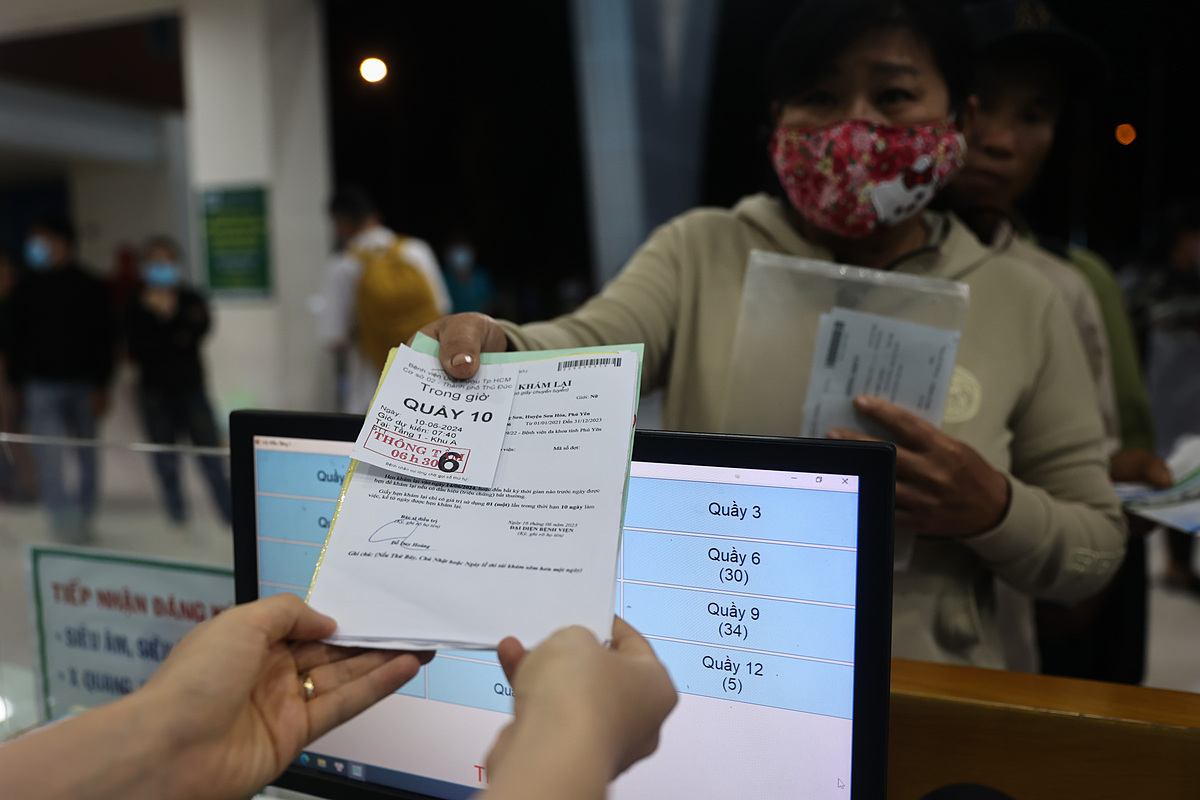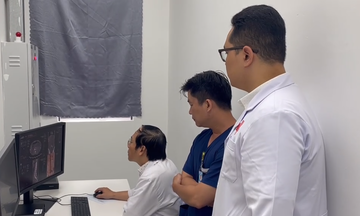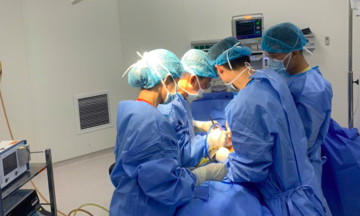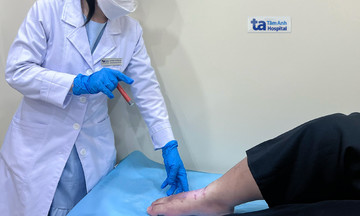"I used to think 100% insurance meant no out-of-pocket costs, but every hospitalization incurs extra charges, thankfully minimal," he said. During his recent stay at the 175 Military Hospital, Ho Chi Minh City, his family covered the difference for a 4-person ward and medications not covered by health insurance.
According to Vietnam's health insurance law, 100% (or 95%, 80%) coverage refers to the proportion of medical services and drugs covered within the designated benefits list and under specific conditions. Only certain groups receive 100% coverage for all eligible medical expenses, including war veterans, children under 6, individuals from poor households, military personnel, and police officers. For those not in these groups, coverage might be 80% or 95%.
Ms. Nguyen Thi Thu Hang, Deputy Director of Social Insurance Region XXVII, explained that even with 100% coverage, patients still incur costs for on-demand examinations, procedures, tests, or upgraded rooms.
Patients seeking treatment outside their designated network also don't receive 100% coverage, except for rare diseases, serious illnesses, surgeries, or high-tech services listed by the Ministry of Health.
For instance, without a referral, patients seeking treatment at higher-level hospitals may only receive 40% coverage for inpatient care at the central level, 60% at the provincial level, and almost no coverage for outpatient visits.
The health insurance fund operates based on a list of covered drugs, medical supplies, and technical services issued by the Ministry of Health. This list, updated periodically, may not include the latest, specialized, or expensive treatments and services.
Doctors might prescribe non-covered items for better efficacy, fewer side effects, or suitability to the patient's condition, resulting in 100% out-of-pocket expenses for the patient.
For example, many imported, high-quality brand-name drugs with the same active ingredients as generic domestic drugs aren't covered, or might have only 50% or 70% coverage.
Similarly, medical supplies have coverage limits. For cardiac stents, insurance covers a maximum of 36 million VND for the first stent and 18 million VND for subsequent ones. Knee replacements have a maximum coverage of 35 million VND for partial replacements and 45 million VND for full replacements, even though the maximum cost for the procedure is capped at 45 times the base salary.
These regulations aim to ensure efficient and targeted fund usage and encourage adherence to treatment procedures.
 |
Patients waiting for medical examination at a hospital in Ho Chi Minh City. Photo: Quynh Tran |
Patients waiting for medical examination at a hospital in Ho Chi Minh City. Photo: Quynh Tran
To avoid confusion and frustration, experts advise patients to confirm with their doctors whether treatments are covered, the extent of coverage, estimated out-of-pocket costs, and fully covered alternatives. Patients should also request detailed invoices, especially for self-paid items, and understand their insurance benefits and referral procedures for maximum coverage.
Le Phuong












